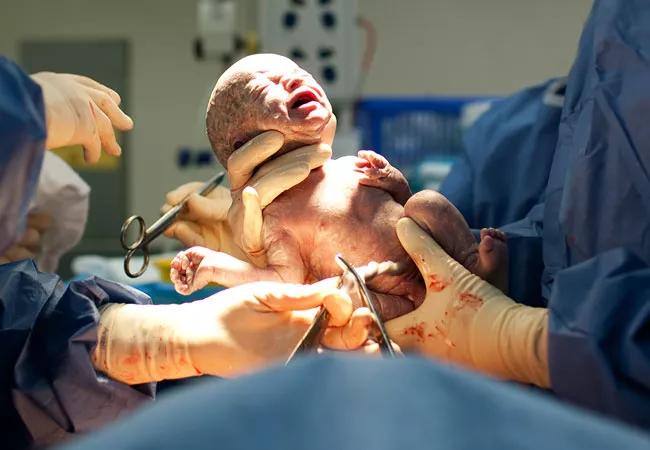A conversation with Giancarlo Mari, MD

Giancarlo Mari, MD, a maternal-fetal medicine (MFM) specialist, has accepted an appointment as Staff in the Department of Obstetrics and Gynecology at Cleveland Clinic. He comes to Cleveland Clinic from the University of Tennessee Health Science Center, Memphis, where he was chair of the Department of Obstetrics and Gynecology, and director of the MFM fellowship since 2009.
Advertisement
Cleveland Clinic is a non-profit academic medical center. Advertising on our site helps support our mission. We do not endorse non-Cleveland Clinic products or services. Policy
Consult QD spoke with Dr. Mari about what drew him to the field and its future.
Q: What drew you to the specialty of MFM?
Dr. Mari: During my obstetrics residency in Italy, I became fascinated by ultrasound imaging and the possibility of diagnosing fetal conditions, and what procedures could be done to improve pregnancy outcomes.
When I moved to the U.S., I did two years of research at Baylor College of Medicine, Houston, in fetal cardiology and MFM. It felt natural to become a MFM specialist. Next, I spent 10 years at Yale University where I completed a second residency in Ob/Gyn, a fellowship in MFM and then I joined the MFM faculty.
Q: What do you think are the greatest challenges and opportunities in maternal-fetal medicine today?
Dr. Mari: I think there are a lot of opportunities, including decreasing infant and maternal mortality, further expanding indications for in-utero intervention and preparing future experts in MFM though fellowship programs.
The infant mortality is a nationwide problem. The U.S. is one of the few countries that has not been successful in decreasing these deaths. In 1960, the U.S. was 12th in the world when it came to lowest infant mortality rates. Now we’re 30th. The U.S. occupies one of the last positions among the industrialized countries in the world. This is where MFM can help.
Years ago, when I moved to the Memphis area, some of the zip codes reported the highest infant mortality rates in the world. The numbers were comparable to developing countries. I became part of a team that worked on this issue. In a few years, we went from 20% above the expected mortality for very low birth weight infants to 20% below the expected mortality rate.
Advertisement
Q: How do you plan to address the infant mortality rate in Cleveland?
Dr. Mari: We need to have a systematic and comprehensive approach that entails three phases:
The first phase of that program is observation. We’ll need to assess where the opportunities are. For example, common practice used to dictate that very small babies with abnormal blood flow at the umbilical artery (IUGR) were being delivered immediately at 26–28 weeks of gestation, which meant they had a very high risk of post-natal complications and death.
The second phase is awareness. We’ll need to make the obstetrical team aware of the problem and start studying it.
The third phase is implementation. Once the opportunity for improvement is established, we can start treating the problem accordingly. Why deliver at 26 weeks if this baby can be delivered at 29 weeks when there is a much better chance of survival? Could we give them a few more weeks in utero? We could build special clinics to address specific conditions that put babies and mothers at risk, such as clinics for intrauterine growth restriction, for mothers carrying twins and for mothers with diabetes. The MFM team at Cleveland Clinic has started this process with Edward Chein, MD, MBA, and Jeff Chapa, MD. I am thrilled to be part of this team.
Today, a small baby can be seen in any clinic, but if you can concentrate a group of caregivers to work together, management of the mother’s and baby’s health will be better because everyone has more experience with these kinds of patients. MFM is a broad specialty; therefore, we need to have more practitioners from different specialties that work in the same team.
Advertisement
Cleveland Clinic has started an outstanding in-utero intervention program with Darrell Cass, MD. We plan to widen the spread of the program and start in-utero endoscopy, where we can operate directly on the fetus and placenta through a 2-3 mm abdominal incision.
The third goal is to establish a MFM fellowship at the Cleveland Clinic that will prepare future practitioners in the field.
Q: What do you consider the most exciting areas of opportunity in maternal-fetal medicine in the next five to 10 years?
Dr. Mari: To develop a fetal intensive care unit. I’ve been thinking about this and feel that it is the right time to actuate the project. There are two ways this can be done: an in-utero approach and an ex-utero approach. With an in-utero approach, we would manage the mother and fetus to time delivery. For example, in Memphis we started delaying delivery of very premature babies and we accomplished the goal of decreasing perinatal mortality. The ex-utero approach is still experimental, but in the future, this may allow the creation of an artificial uterus for babies to be delivered before 22–23 weeks’ gestation. Within a fluid environment, the fetus would have a chance to harmoniously develop until reaching developmental milestones that allow for life outside the uterus. This ex-uterus ICU may become a reality in the near future. Of course, our main goal must remain prevention of disease.
Advertisement
Advertisement

ACOG-informed guidance considers mothers and babies

Prolapse surgery need not automatically mean hysterectomy

Artesunate ointment shows promise as a non-surgical alternative

New guidelines update recommendations

Two blood tests improve risk in assessment after ovarian ultrasound

Recent research underscores association between BV and sexual activity

Psychological care can be a crucial component of medical treatment

A multidisciplinary approach facilitates timely diagnosis and better treatment